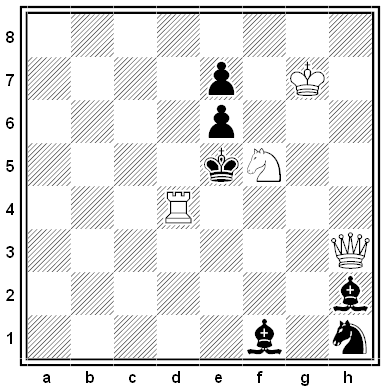Math Notes
1 + 2 = 3
1×2 + 2×3 + 3×4 = 4×5
1×2×3 + 2×3×4 + 3×4×5 + 4×5×6 = 5×6×7
1×2×3×4 + 2×3×4×5 + 3×4×5×6 + 4×5×6×7 + 5×6×7×8 = 6×7×8×9
In general, the sum of the first (n+1) products of consecutive n-tuples of consecutive integers is equal to the product of the next n-tuple.
(Thanks, Peter.)
The Long View

Hitler’s chief architect, Albert Speer, favored a “theory of ruin value” in which German buildings would collapse into aesthetically pleasing ruins, like those of classical antiquity. “I want German buildings to be viewed in a thousand years as we view Greece and Rome,” he said.
Using special materials and applying statistical principles, Speer claimed to have created structures that in 1,000 years would resemble Roman ruins. “The ages-old stone buildings of the Egyptians and the Romans still stand today as powerful architectural proofs of the past of great nations, buildings which are often ruins only because man’s lust for destruction has made them such,” he wrote.
Hitler liked to say that the purpose of his building was to transmit his time and its spirit to posterity. Ultimately, all that remained to remind men of the great epochs of history was their monumental architecture, he remarked. What then remained of the emperors of the Roman Empire? What would still give evidence of them today, if not their buildings […] So, today the buildings of the Roman Empire could enable Mussolini to refer to the heroic spirit of Rome when he wanted to inspire his people with the idea of a modern imperium. Our buildings must also speak to the conscience of future generations of Germans.
Hitler endorsed the idea, favoring the use of durable materials such as granite to reflect his soaring ambitions. “As capital of the world,” he said, “Berlin will be comparable only to ancient Egypt, Babylon, or Rome!” Ironically, this came true: When ancient Rome collapsed, its greatest buildings were pillaged for building materials, and when the Russians demolished Speer’s grandiose Chancellery in 1947, its marble was reused to build a metro station.
Hot Lunch
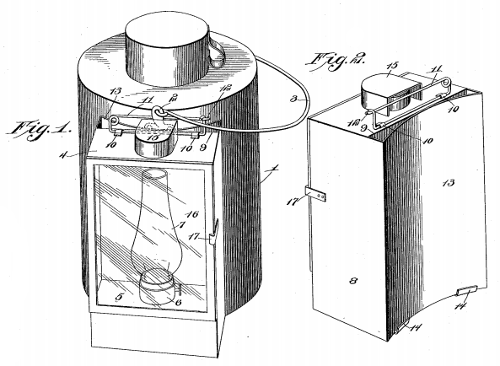
Christina Malmo of Montana patented this combination lantern and dinner pail in 1905. The lantern, which contains its own fuel source, hugs the pail, “conducting heat to the victuals within.”
“This close connection between the lamp attachment and the dinner-pail serves the double purpose of steadying the lamp, thus avoiding any swinging which would occur were the lamp attached by any loose means. The second utility of this close connection is that the heat from the lamp is thus utilized in warming the victuals within the dinner-pail, a very useful advantage to a miner or any one who is obliged to carry his dinner for any length of time.”
Death Poems

In Japanese culture it is traditional to write a “farewell poem to life,” or jisei, as death approaches. Zen monk Kozan Ichikyo wrote this verse on the morning of his death in 1360:
Empty-handed I entered the world
Barefoot I leave it.
My coming, my going —
Two simple happenings
That got entangled.
And monk Mumon Gensen wrote this in 1390:
Life is like a cloud of mist
Emerging from a mountain cave
And death
A floating moon
In its celestial course.
If you think too much
About the meaning they may have
You’ll be bound forever
Like an ass to a stake.
On March 17, 1945, Gen. Tadamichi Kuribayashi sent a letter to Imperial headquarters apologizing for ceding Iwo Jima to American forces. He closed with a death poem:
Unable to complete this heavy task for our country
Arrows and bullets all spent, so sad we fall.
But unless I smite the enemy,
My body cannot rot in the field.
Yea, I shall be born again seven times
And grasp the sword in my hand.
When ugly weeds cover this island,
My sole thought shall be the Imperial Land.
His body could not be identified later — it appears that prior to the final battle he removed his officer’s insignia in order to fight among his men as an ordinary soldier.
Montmort’s Theorem
Suppose n students are sitting at n desks in a classroom. They’re asked to stand, mill around at random, and then sit again. What is the probability that at least one student will find herself in her original seat?
Intuition says that the probability ought to drop as the number of students increases, but in fact it remains about the same:

In fact, Pierre Rémond de Montmort showed in 1708 that it’s

… which approaches 1 – 1/e, or about 0.63212. Whether there are 10 students or 10,000, the chance that at least one student returns to her own seat is about 2/3.
Romance Denied
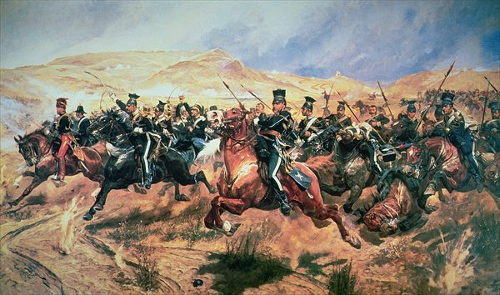
James Bosworth survived the Charge of the Light Brigade in 1854 and went on to become a railway stationmaster in Southampton, England, where he died in an accident at age 70. His epitaph reads:
Though shot and shell flew around fast,
On Balaclava’s plain,
Unscathed he passed, to fall at last,
Run over by a train.
(Thanks, Doug.)
A Plea in Disguise
In March 1928, the British steamer City of Eastbourne picked up an SOS from the tanker British Hussar in the Pacific but could not locate her position. Japanese authorities reported that several of their own ships and stations had picked up the SOS but could not understand the geographical information given. In comparing the reports, they estimated that the British Hussar was about 400 miles southwest of Hawaii when she ran into trouble. Two Navy destroyers searched the area for five days but found no trace of her.
When they cabled the bad news to the tanker’s owners, they received a puzzling reply. The British Hussar was safely moored off a landing stage at Adaban in the Persian Gulf. She had been nowhere near the Pacific when the messages were sent. But the SOS signals were undeniable.
The British consul at Yokohama found that four ships had been near Hawaii when the signal was received: the City of Eastbourne, the Niagara, the Ventura, and the Asiatic Prince — and, strangely, the Asiatic Prince was also missing.
Now there were two mysteries: An SOS had been received in the Pacific, seemingly sent from a perfectly sound ship 6,000 miles away; and a second ship, equipped with the latest wireless equipment and lifeboats, had vanished in the same region — which had reportedly been lashed by hurricane-force winds at the time.
The explanation that emerged is that the British Hussar’s SOS must have been sent by the Asiatic Prince as it foundered in the storm. The SOS had contained the call sign of the British Hussar, GJVR. The call sign of the Asiatic Prince was GJVP. In Morse code, P is ·- -· and R is ·-· Apparently the central dash had been sent twice.
If this is so, the Asiatic Prince must have gone down with astonishing swiftness — the 10,000-ton steamer had a new hull, new engines, and new equipment, yet sank so quickly that she could manage only one brief message.
Podcast Episode 31: Pigs on Trial
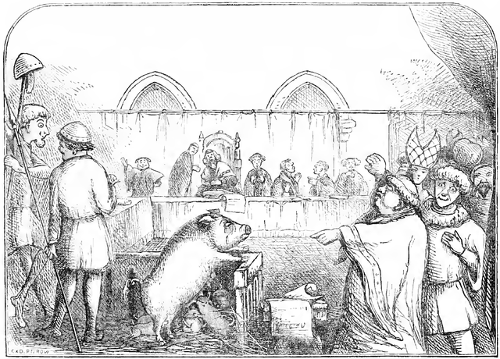
For 500 years of European history, animals were given criminal trials: Bulls, horses, dogs, and sheep were arrested, jailed, given lawyers, tried, and punished at community expense. In the latest Futility Closet podcast we’ll explore this strange practice and try to understand its significance to the people of the time.
We’ll also rediscover the source of Futility Closet’s name and puzzle over how a ringing bell relates to a man’s death.
In a Word
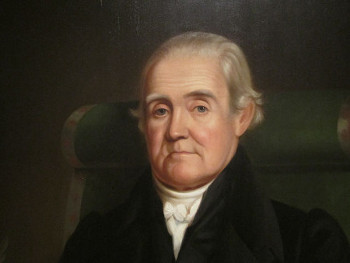
cohonestation
n. honouring with one’s company
William Cobbett, a writer who was to plague Noah for many years, probably invented one piece of Websterian apocrypha. Dr. Benjamin Rush, whom Noah had cultivated, supposedly met him upon his arrival and said: ‘How do you do, my dear friend. I congratulate you on your arrival in Philadelphia.’
‘Sir,’ Webster allegedly replied, ‘you may congratulate Philadelphia on the occasion.’
— John S. Morgan, Noah Webster, 1975

